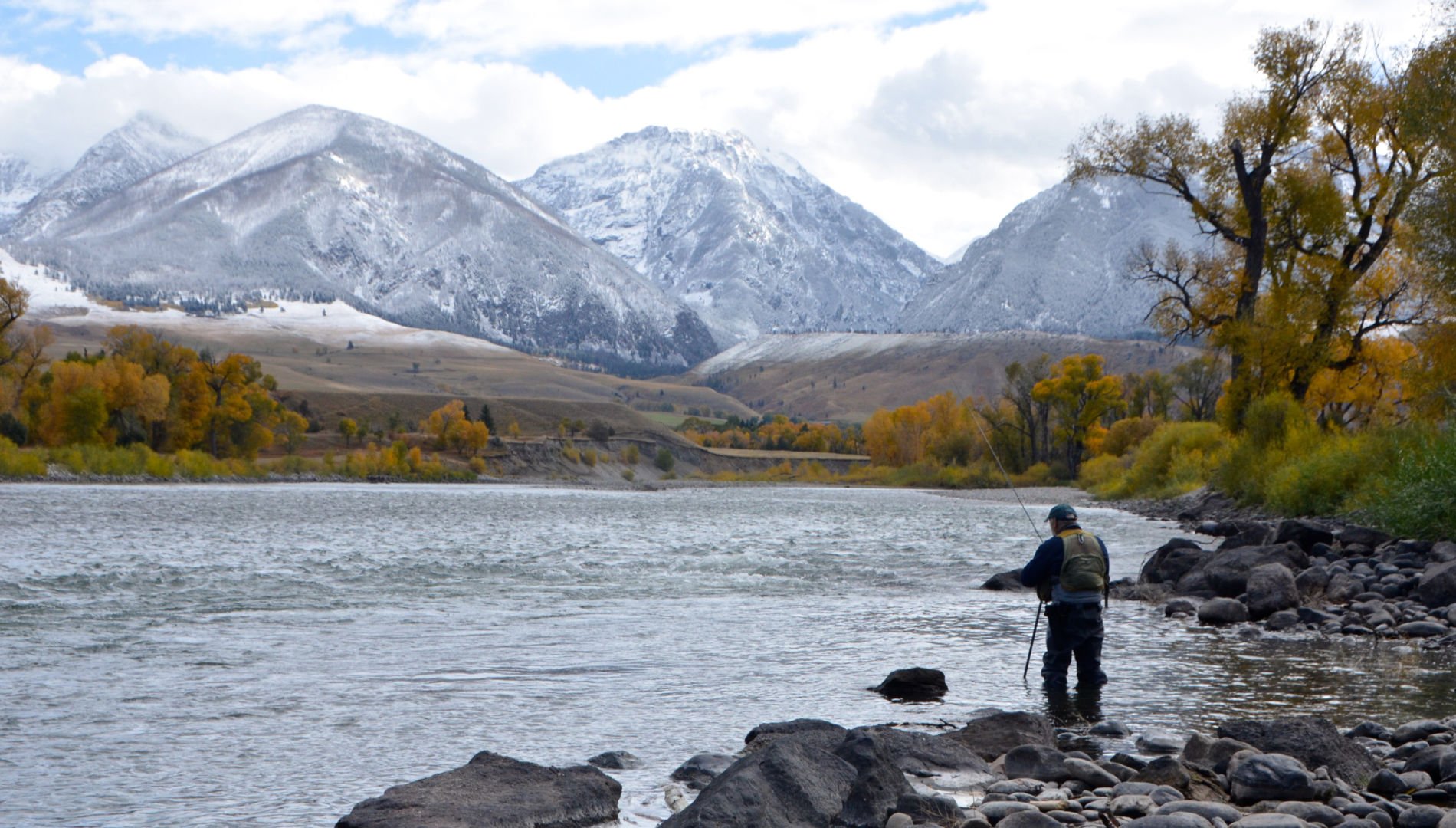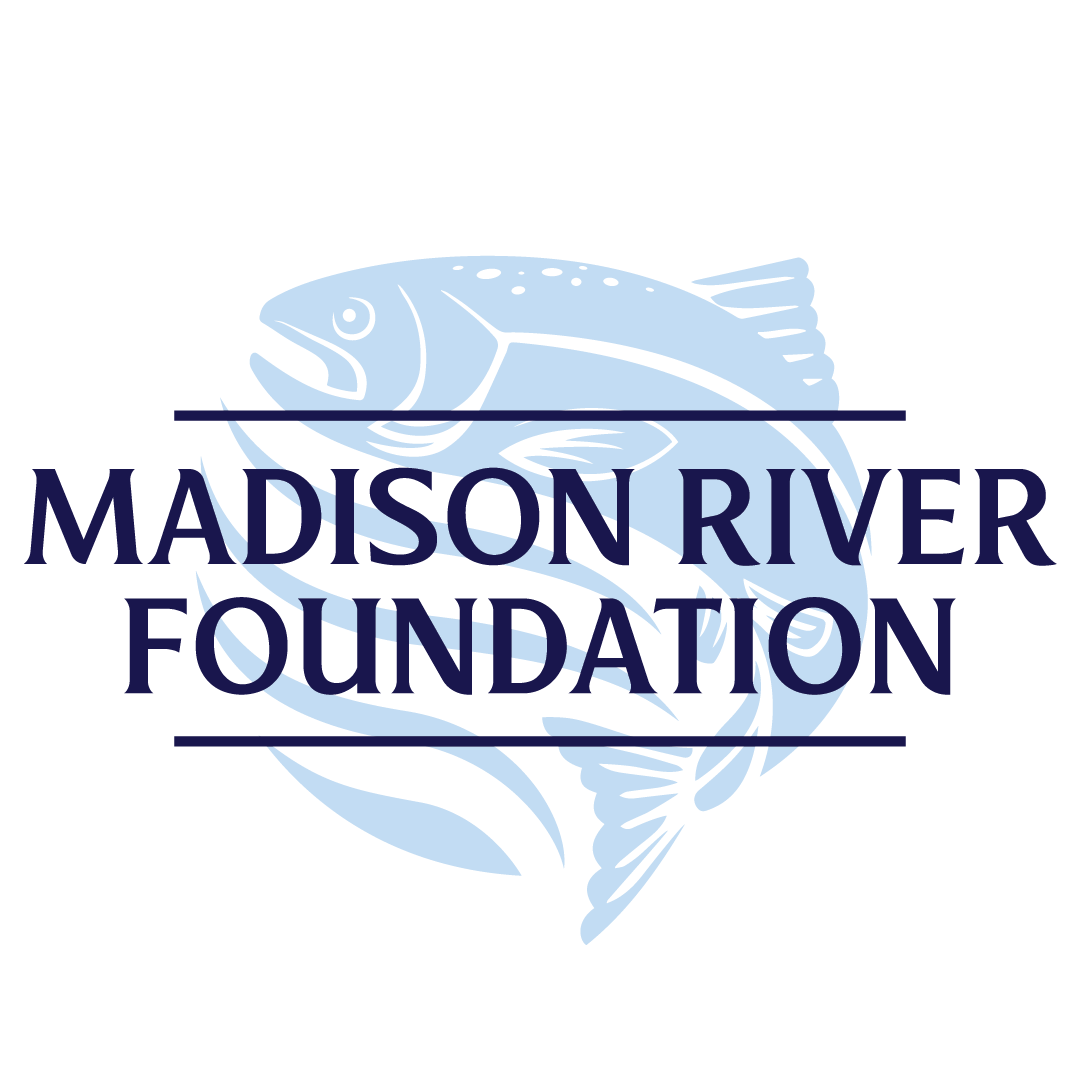
Fishing Report
April 2024 - Fishing Report and Current Conditions for the Upper Madison
by Justin Edge, Edge Outfitting
The Madison typically fishes very well this time of year. In fact, Montana FWP’s creel survey results indicate March as having the second highest catch rate per hour of the year for anglers (second only to December, interestingly). The only unusual thing this year has been that good fishing has come with good weather for March. Stoneflies and worm patterns (no surprise here) are very very effective. There's a good reason for this. Abundances of stoneflies and annelid worms in the benthic environment are very high, and they are nutrient rich sources for fish coming out of winter. A black Girdle Bug and worm of choice with 0-2X short leaders paired with tight drag is the top rig lately on my trips. With this setup, less flies are lost, and fish are landed faster. Obviously with the bigger hook sizes, crimping barbs is a must in my opinion.
As Baetis begin to get more active in April, a small hare’s ear or pheasant tail in shallow to medium depth waters works well. Especially in tandem with a stonefly pattern. Some rising heads have been seen on midges and early hatches of Baetis, especially near Ennis and Ennis Lake where water temps reach ideal ranges to cue Mayflies and Chironomids, but not in numbers to target exclusively for long periods of time. I suspect the next stretch of water temps consistently hitting the upper 40s will help these bugs really pop and become more prevalent, with March Browns still a month or so away. The classic Parachute Adams in a 14-18 on a 9’ 3-4x leader is perfect for Spring dry fly fishing. It’s always a nice feeling seeing those beautiful sailboats on the water in Spring.
As for stoneflies, skwala adults are around. Skwalas are often mistaken for early golden stones as they do resemble them slightly. However, Skwalas are members of the aptly named springfly family (Perlodidae) and goldens are members of the common stonefly family Perlidae. Skwalas are terrestrial emergers like all the large stoneflies, however they prefer a little more privacy compared to other major stoneflies. Hidden as adults in the crevices of cobble instead of clinging to open exposures of large rock or riparian plant life, they can go completely unnoticed by all but the most astute anglers and observers until their mating flights begin. Skwalas never seem to flex and flap their wings as salmonflies do either. Nevertheless, they are a nice meal for trout coming out of a long winter, and if conditions are right, can provide some early season dry fly opportunities. Currently here in the first week of April, skwala adults are actively hatching in Ennis. I’ve not seen any adults upriver in the float section above Varney yet. However, nymphs are active nearshore, so it will happen soon upriver as well. Although the other stoneflies get more attention, relative abundance of skwalas in the Upper Madison are higher than any other stonefly taxa, by a large margin. So, it’s an important resource pulse for fish in late Winter/early Spring. The best imitation of a nymphal skwala is a size 6 coffee/black girdle bug. As for an adult imitation, I prefer the size 6 black underbody water walker dry fly.
Flows are pretty average for this time of year, hovering around 1,000 cfs at Varney and 850 cfs at Kirby near the West Fork. The flows are kept at these levels to protect brown trout eggs, and also to meet minimum flow requirements below Ennis Dam. Mean max water temps creeped up starting mid March with the warm spell hitting a high of 49 at Varney on March 19 and then again on April 2. Lows at Varney have been in the upper 30s. Essentially, this has equated to better fishing over longer periods of the day than normally at this time of year.
Currently rainbows are finishing up what I’ve noticed has been a fairly good spawning year from top to bottom throughout the river. Many redds are vacant now, but still polished. It’s always pretty exciting to float by and see them in side-channels and shallow shoals doing their thing. We’re very fortunate to have a pretty healthy and resilient fishery. Thankfully, angling pressure is typically light this time of year, so for the most part, the annual ritual of spawning goes by relatively unnoticed.
Most access points are open currently, with the exception of Ennis. Ennis might not open until May due to annual ice gorge damage. They've got to wait for residual ice gorge shelves to melt before bringing in heavy machinery to clean debris and grade.
In conclusion, I’ve been really impressed with the quality of fishing this spring, and the overall health of fish. Especially brown trout, which are on a lot of folks’ minds lately. I’ve noticed some great size ranges and numbers on the upper river and am eager to see the annual FWP 2188 report (due in April). Specifically, abundances of brown trout in the West Fork area just over two years after the dam malfunction which occurred during the fall egg incubation period. Something to keep an eye on will be age class 2 and 3 brown trout recruitment numbers and trends.
New Regs
This year there’s a new fishing regulation on the Madison to be aware of. While the regs have not changed as far as artificial lures only, this year includes a new restriction to barbless, single-pointed hooks from Varney Bridge to Ennis Lake. No treble or double hooks. Two fly rigs are still allowed, but two hook individual flies or lures are not. Anglers may remove treble or double hooks from the lure and replace them with a single hook, or the shanks may be cut off the other hook points to leave a single hook. Lures with multiple hook attachments may still be used but any treble hook must be replaced by a single hook.
Snow/Water
Water is everything in the west. And its summer supply is no longer very predictable. As I’m writing this the Upper Madison Snow Water Equivalent (SWE) is at 83%. Below is a graph of current Upper Madison SWE measured in inches, with stats on percent of median (30 years) as of 4/3 with 18 days left until median peak. As you can see, we’re very unlikely to reach median peak SWE.
The good news is Hebgen Lake, which is critically important for flows in the Upper Madison, is currently at 6530ft. This is 2.8ft higher than the 20 year average. That’s good. A head start. Second, the graph above is based upon 11 Snotel sites in the basin. The most relevant stations for Hebgen are in the uppermost portion of our basin. Those four stations (Madison Plateau, Whiskey Creek, Black Bear, and West Yellowstone) are fairing the best of all basin Snotel sites with all of them in the 90th percentile or better.
So given the Snotel site data, what is our future likely to hold this summer for flows? Well, the folks at Natural Resources Conservation Service (NRCS) have a dedicated team for modeling and forecasting based on current conditions compared to historical observations. On the first of every month they produce a forecast chart for each basin. It’s a little esoteric and nerdy so I’ll help explain it. Here’s the most recent model produced on March 1 (still waiting on publication of April 1 chart):
Essentially, after you get past all the lines and colors and percentiles, what this forecast is telling us is there’s a coin flips chance that we achieve roughly 80% of median inflow for Hebgen Lake this April-September and a coin flips chance we get to 77% of median inflow for Ennis Lake this April-September. If you’re curious what our odds of getting to median are, it’s roughly a 5-10% chance for both Hebgen and Ennis inflow.
Macroinvertebrate Survey Summaries
I’ve started an annual series each Spring where I summarize all the research and reports available from the previous year on various important topics to anglers and lovers of the Upper Madison. Since we’re seeing some of the first major hatches of the season already, I wanted to start with a review of macroinvertebrate surveys on the Upper Madison. Who’s completing the surveys, where, how frequently, and most importantly - what bugs are present and what trends exist if any at the three long term study sites? If you’d like to read this summary, follow this link to my Blog. Other topics I'll cover in future posts include: water quality, recreation data, fisheries data, among others.
- Justin Edge


